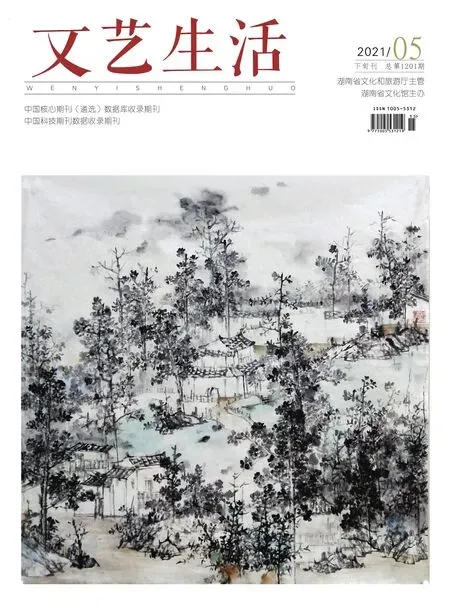A Study of the Translation of《Three-Body Problem》From the Ambiguity in Gender Translation
LIU Mengyu
(Guilin University of Electronic Technology,Guangxi Guilin 541004)
Abstract:《Three-Body Problem》written by Liu Cixin,won the73rd Hugo Award for Best Long Story in2015,which is a milestone in China’s science fiction literature.This paper will make a contrastive analysis between the Chinese and English version to analyze the major translation strategies and methods from the ambiguity in gender translation.It is hoped to be of practical value to the English translation of Chinese novel.
Key words:《Three-Body Problem》;translation strategy;ambiguity in gender translation;feminist translation
一、Introduction
《Three-Body Problem》tells the story of the rise and fall of Earth civilization in the universe,dealing with the matters concerned with human history,physics,astronomy,sociology,philosophy and religion.In this book,the image of female characters is full and well-developed,which occupies a large proportion in the whole book,arousing human beings to rethink the status of women.The book is a science fiction novel in which a female character is the main character.Her words and deeds have a significant impact on the direction of the story line.In English translation,translators try to avoid using a large number of gender specific adjectives in the source text to describe women’s roles,and focus on the behavior itself rather than women itself.
二、The Analysis of Translation of《Three-Body Problem》From the Ambiguity in Gender Translation
Lang Jing(2015:9),a professor of Beijing Foreign Studies University,puts forward the translator’s feminist translation concept in her master’s thesis The Translation Strategy of Feminism in the English Translation of Three-dimensional,using the translator Louise Von Flotow’s feminist translation strategy to analyze Liu Yukun’s translation.According to this essay,words such as“ordinary woman”,“scientific woman”,“girl”,“woman writer”and“female official”are all replaced by gender-neutral words while some feminine descriptions are also deliberately reduced or deleted,and the content with female discrimination is rewritten.
In the study of feminist translation strategies,the three translation techniques summarized by Louise Von Floto:supplement,prefacing and footnoting,and hijacking have been highly praised and recognized by Chinese translation scholars.Among them,the supplementary strategy usually refers to the translator’s creative rewriting of the original text according to his own gender ideology,so there is a difference between the translation and the original text.Feminist translators often use preface to explain their translation purposes,translation reasons,translation strategies and ideas contained in the original.Hijacking strategy allows feminist translators to rewrite any part of the original works that the translator considers to be contrary to feminism according to their own intention.
There are two examples which can be illustrated as followed:
E.g.1:
两三分钟后,叶文洁护卫中的一员,一名苗条美丽的少女动人地笑了笑,那笑容是那么醒目,将很多人的目光引向了她。少女袅袅婷婷地向潘寒走去。
A few moments later,one of the bodyguards near Ye,a young woman,smiled.She walked toward Pan Han casually.(Page596)
The feminine descriptions,such as“苗条美丽”and“动人地”are deleted in the translation.However,the translator needs to pay attention to cut reasonably,as Leo Ou-fan Lee(1985:565)says:“a severely abridged translation gives a partial and often erroneous impression of the original work.”Hijacking is one of the most controversial ways of translation:feminist translators often appreciate or manipulate the source text without feminist intention,and rewrite it in the translation.For example,the masculine words are used in the original text,and the translators translate them into neutral word in the translation,or weaken the female characters,such as weakness and fear in the source text.In this way,although the content of the source text has not changed,it has a new meaning.
E.g.2:
姑娘到底还是不老练。
The young woman was not experienced in lying.(Page475)
Translation is not only a simple copy of the original meaning,but also an extension and supplement of the original.“老练”is a neutral word,without praise or criticism.It only describes a person who is smart and knows how to behave.He can do both good and bad with his tact.In the process of translation,the translator gives a supplementary explanation to the word and adds the feature of lying.It makes the role more vivid and helps the target language readers to understand the original text.This is a supplementary translation strategy.
It does not specify how translators should perform in the translation tasks and what kind of translation strategy and method they should choose(Nord,2014).It is just a series of implicit principles or choices internalized by translators(Shuttleworth,M.2014).Responsible and professional translators,under the guidance of the translation guidelines,should properly use translation strategies and methods to ensure that the translation meets the expected functions described in the translation program.In the whole creative activity,translator is at the center of the pivotal position undoubtedly,playing the most active role.At first,he was the reader for both the original work and the author,and later became the author of the translation and his readers(Xu Jun,2013:9-10).
三、Conclusion
Feminism’s view of translation,both theoretically and practically,is the deconstruction of the single meaning of the original text.Feminist translators question the expression of words,grammar,concepts and ideas in the original text,and try to use creative translation or even rewriting to highlight the sexist nature of the original text or the source language,so as to arouse readers’thinking about gender issues.Feminist translation theory not only helps people reflect on traditional translation theory,but also provides a new theoretical basis for it.This makes people pay more attention to the power operation behind translation and have a deep understanding of the significance of translation.There are a lot of feminism elements in the original text.When translating,the translator chooses words to show his respect and love for women.This is also the translator’s attempt to arouse the reader’s attention to the problems of gender injustice or gender discrimination in literary works.
Bibliography:
[1]Leo,Ou-fan-Lee.Contemporary Chinese Literature in Translation—A Review Article[J].The Journal of Asian Studies,1985(03).
[2]Nord,C.Translating as a Purposeful Activity:Functionalist Approaches Explained[M].Shanghai:Shanghai Foreign Language Education Press,2004.
[3]Shuttleworth,M.& Moira Cowie.Dictionary of Translation Studies[N].Manchester:St.Jerome Publishing,1997.
[4]郎静.论《三体》英译本中的女性主义翻译策略[D].北京:北京外国语大学,2015.
[5]刘慈欣.三体[M].重庆:重庆出版社,2008.
[6]路易丝·冯·弗洛托.女性主义翻译:上下文、实践和理论[J].1991(02).
[7]许钧.“创造性叛逆”和翻译主体性的确立[J].中国翻译,2003(01).

